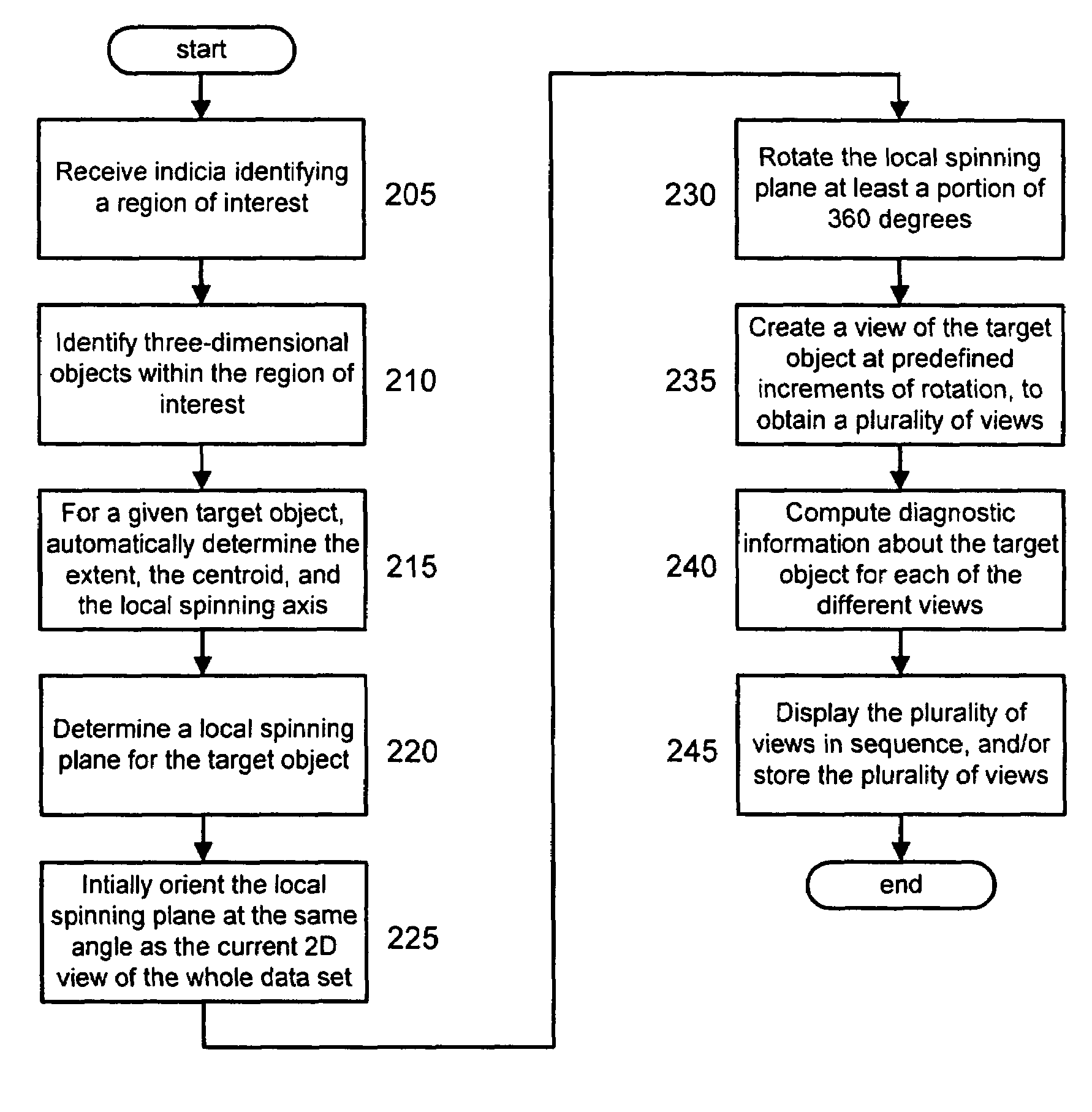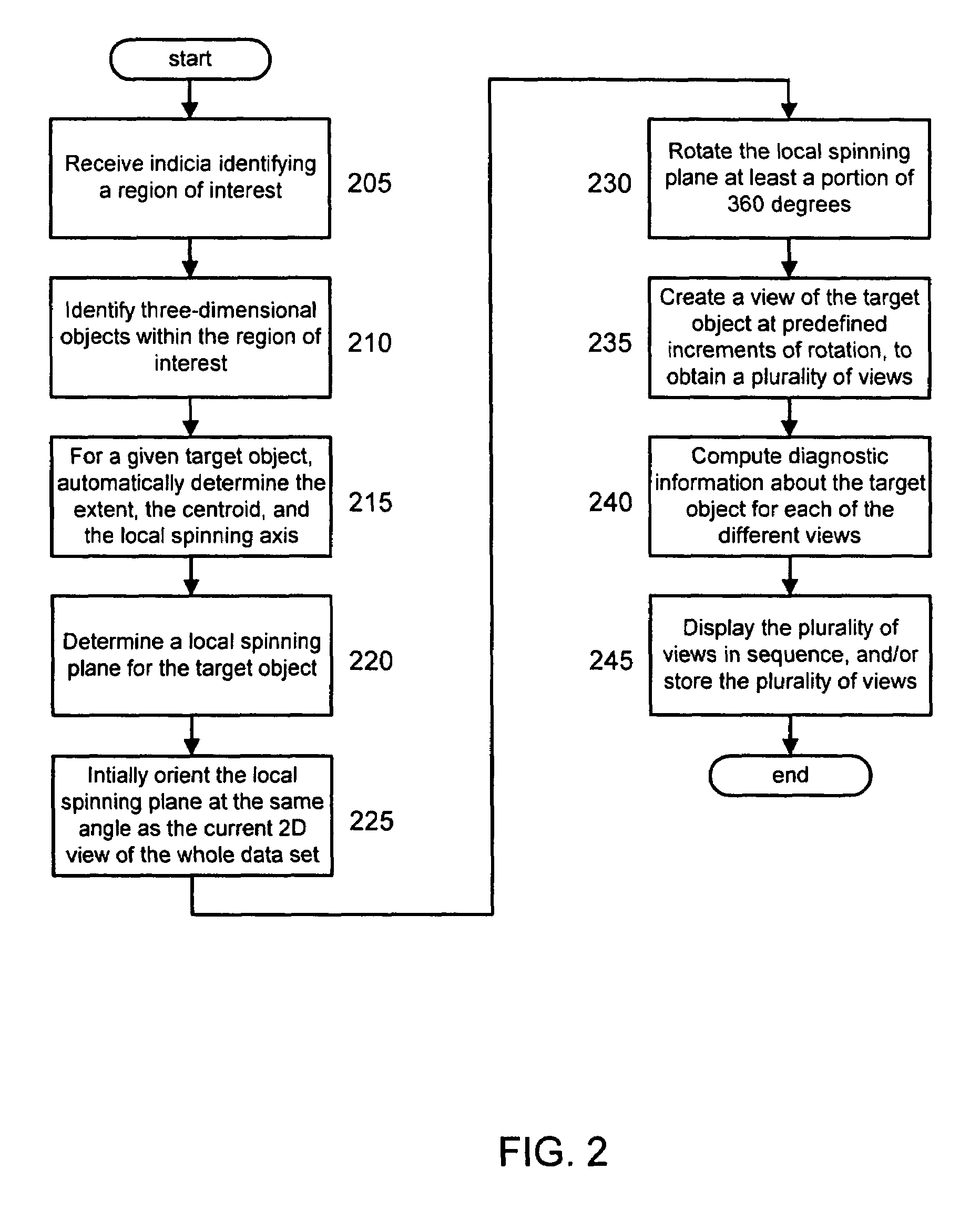Computer-aided diagnosis method for aiding diagnosis of three dimensional digital image data
a computer-aided diagnosis and digital image data technology, applied in the field of computer-aided diagnosis (cadx), can solve the problems of large amount of data for the physician to examine, inability to form a mental model, and inability to diagnose cancer or other diseases
- Summary
- Abstract
- Description
- Claims
- Application Information
AI Technical Summary
Benefits of technology
Problems solved by technology
Method used
Image
Examples
Embodiment Construction
[0031]The present invention is directed to a computer-aided diagnosis (CADx) method for aiding diagnosis of three-dimensional digital image data. It is to be appreciated that the invention may be used to aid diagnosis of any abnormality in any part of the body which is represented in a digital image.
[0032]FIG. 1 is a block diagram of a computer processing system to which the present invention may be applied, according to an embodiment of the present invention. The system 100 includes at least one processor (CPU) 102 operatively coupled to other components via a system bus 104. A read only memory (ROM) 106, a random access memory (RAM) 108, a display adapter 110, an I / O adapter 112, and a user interface adapter 114 are operatively coupled to system bus 104.
[0033]A display device 116 is operatively coupled to system bus 104 by display adapter 110. A disk storage device (e.g., a magnetic or optical disk storage device) 118 is operatively couple to system bus 104 by I / O adapter 112.
[003...
PUM
 Login to View More
Login to View More Abstract
Description
Claims
Application Information
 Login to View More
Login to View More - R&D
- Intellectual Property
- Life Sciences
- Materials
- Tech Scout
- Unparalleled Data Quality
- Higher Quality Content
- 60% Fewer Hallucinations
Browse by: Latest US Patents, China's latest patents, Technical Efficacy Thesaurus, Application Domain, Technology Topic, Popular Technical Reports.
© 2025 PatSnap. All rights reserved.Legal|Privacy policy|Modern Slavery Act Transparency Statement|Sitemap|About US| Contact US: help@patsnap.com



